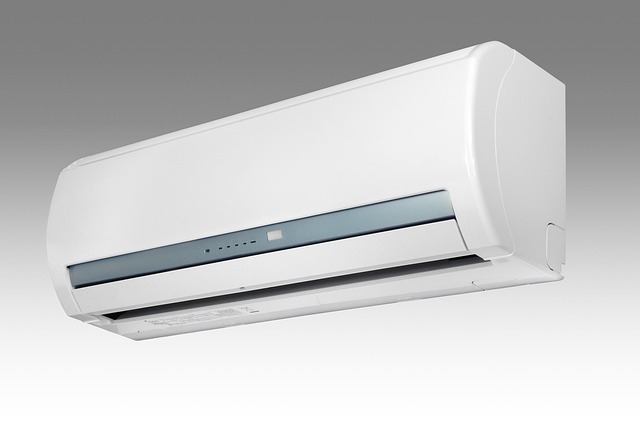Discover HVAC Care Costs and What They Mean for Efficiency
Your home's heating, ventilation, and air conditioning system represents one of the most significant investments in comfort and property value. Yet many homeowners remain unaware of how HVAC maintenance costs directly impact energy bills and system longevity. Understanding the financial aspects of HVAC care isn't just about budgeting for repairs—it's about recognizing how regular maintenance translates to improved efficiency, extended equipment life, and substantial long-term savings.

Why HVAC Care Matters
Regular HVAC maintenance isn’t merely an optional expense—it’s a crucial investment in your system’s performance and longevity. When properly maintained, HVAC systems operate at peak efficiency, consuming less energy while delivering optimal heating and cooling. Neglected systems, by contrast, work harder to achieve the same results, leading to increased energy consumption, higher utility bills, and accelerated wear and tear on components.
Beyond efficiency concerns, routine maintenance helps identify potential issues before they escalate into major breakdowns. Small problems like dirty filters, loose electrical connections, or minor refrigerant leaks can develop into significant malfunctions if left unaddressed. These preventable failures often strike during peak usage seasons when repair services are in highest demand and most expensive.
Typical Maintenance Costs
Regular HVAC maintenance generally falls into two categories: do-it-yourself tasks and professional service visits. DIY maintenance includes replacing air filters (typically $10-$30 every 1-3 months), keeping outdoor units clear of debris, and ensuring proper airflow around indoor vents. These simple tasks cost little but yield substantial benefits in system performance.
Professional maintenance plans typically range from $150-$300 annually, often structured as biannual tune-ups before heating and cooling seasons. These services generally include comprehensive system inspections, cleaning of components, lubrication of moving parts, electrical connection tightening, and calibration of thermostats. Many HVAC companies offer maintenance agreements that provide priority scheduling and discounts on repairs when needed.
Repair Costs to Expect
Even with diligent maintenance, HVAC components eventually require repair. Repair costs vary widely based on the specific issue, system type, and your geographic location. Minor repairs like replacing capacitors, contactors, or fan motors typically range from $150-$500. Mid-range repairs such as circuit board replacements or compressor repairs can cost between $500-$1,200.
More serious issues like compressor replacement, major refrigerant leaks, or heat exchanger failures represent the costliest repairs, often ranging from $1,500-$4,000. When repair costs approach or exceed 50% of replacement value—particularly for systems over 10 years old—replacement often makes better financial sense than continuing to invest in an aging unit.
Installation and Replacement Costs
Complete HVAC system replacement represents the largest expense in the maintenance lifecycle, with costs varying significantly based on home size, system type, efficiency rating, and installation complexity. A basic forced-air furnace and air conditioning system for a standard home typically ranges from $5,000-$10,000. High-efficiency systems can cost $10,000-$15,000, while advanced setups like geothermal systems may exceed $20,000.
The efficiency rating directly impacts system cost, with higher SEER (Seasonal Energy Efficiency Ratio) ratings for air conditioners and AFUE (Annual Fuel Utilization Efficiency) ratings for furnaces commanding premium prices. However, these higher-efficiency systems often qualify for utility rebates, tax credits, and deliver significantly lower operating costs over their lifespan.
| HVAC Service Type | Average Cost Range | What It Typically Includes |
|---|---|---|
| Annual Maintenance Plan | $150-$300 | Biannual inspections, filter changes, component cleaning |
| Basic Repair | $150-$500 | Capacitor/contactor replacement, minor parts, diagnostics |
| Major Repair | $500-$2,000 | Compressor issues, refrigerant leak repair, fan motor replacement |
| Standard System Replacement | $5,000-$10,000 | Basic efficiency furnace and AC installation |
| High-Efficiency System | $10,000-$15,000 | 16+ SEER AC, 90%+ AFUE furnace installation |
| Premium/Specialty Systems | $15,000-$25,000+ | Variable-speed equipment, zoning systems, geothermal |
Prices, rates, or cost estimates mentioned in this article are based on the latest available information but may change over time. Independent research is advised before making financial decisions.
Efficiency and Savings Connection
The direct relationship between HVAC maintenance and energy efficiency creates a compelling financial case for regular system care. Studies consistently show that properly maintained HVAC systems consume 15-20% less energy than neglected systems. For the average household spending $2,000 annually on heating and cooling, this translates to $300-$400 in yearly savings—often fully offsetting maintenance costs.
Beyond energy savings, regular maintenance extends equipment lifespan by 3-5 years on average. Considering the substantial cost of system replacement, prolonging equipment life through maintenance delivers significant return on investment. Additionally, properly maintained systems maintain warranty coverage, potentially saving thousands on repairs that might otherwise be denied due to neglected maintenance requirements.
The financial math becomes clear: investing $150-$300 annually in professional maintenance can save $300-$400 in energy costs while extending system life and preventing costly emergency repairs. This creates a positive return on investment immediately, before even considering the improved comfort, air quality, and reliability a well-maintained system provides.
Understanding HVAC care costs provides the foundation for informed decision-making about your home’s comfort systems. By recognizing how maintenance investments translate directly to efficiency gains and extended equipment life, homeowners can make financially sound choices that balance immediate budget constraints with long-term value and performance.




